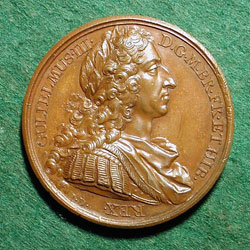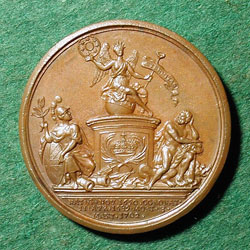

|
WILLIAM III |
|
|
William III (1650-1702), King of England Scotland and Ireland (1689-1702) was the son of William II, Prince of Orange and Mary, daughter of Charles I. Royal authority was limited during William's minority, but the crisis engendered by a combined French and English assault on the United Provinces of the Netherlands led to his appointment as Stadholder of the Netherlands and captain general in 1672. With aid from Emperor Leopold I, William expelled the French. In 1677 he married Mary (later Mary II), daughter of James II of England. Following the Glorious Revolution in 1688, he and Mary, both strong Protestants, replaced the Catholic James, finally defeating him in Ireland at the Battle of the Boyne. William and Mary ruled jointly until her death in 1694. During their reign they accepted a Bill of Rights curbing royal power and restricting succession of the throne to Protestants. In 1699, William organized the alliance that was to defeat Louis XIV of France in the War of the Spanish Succession. He was succeeded to the throne by Anne. (from Encyclopedia of World History) LINK to portrait and biography of William III (Wikipedia) LINK to History of the Period of William III (from World History at KMLA) |
|